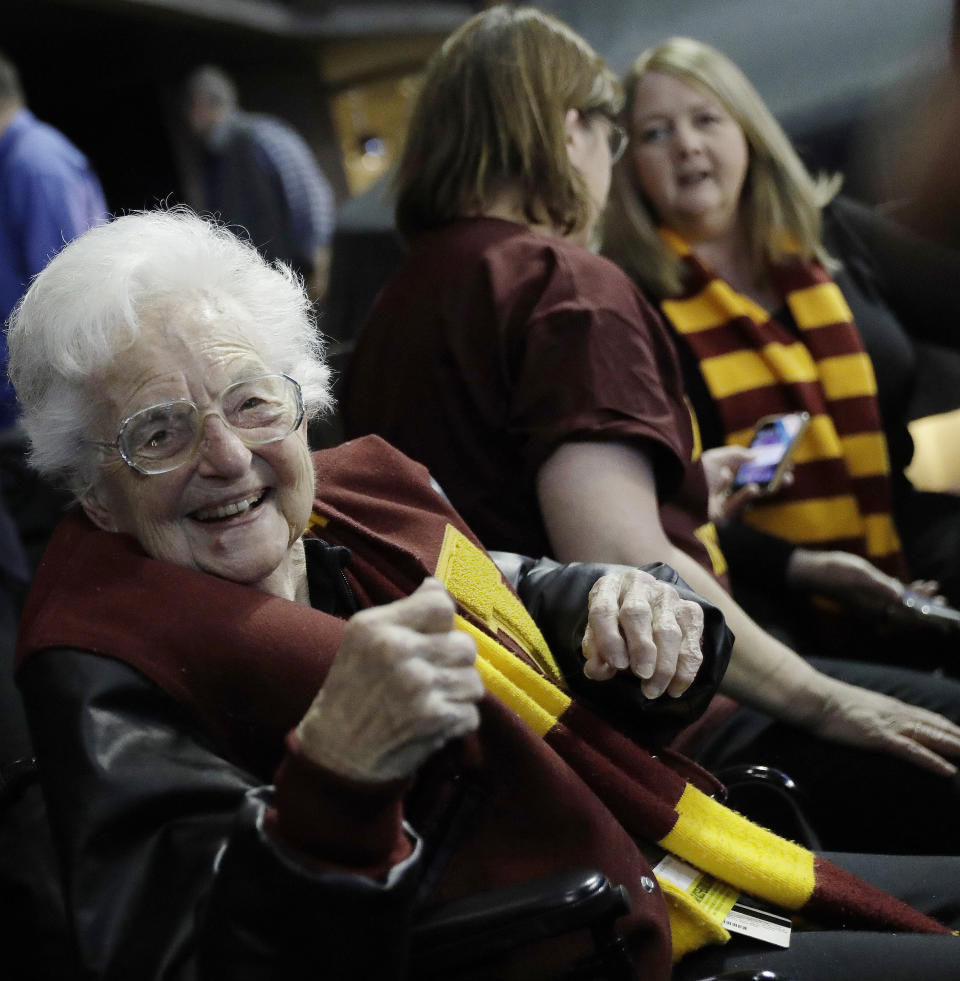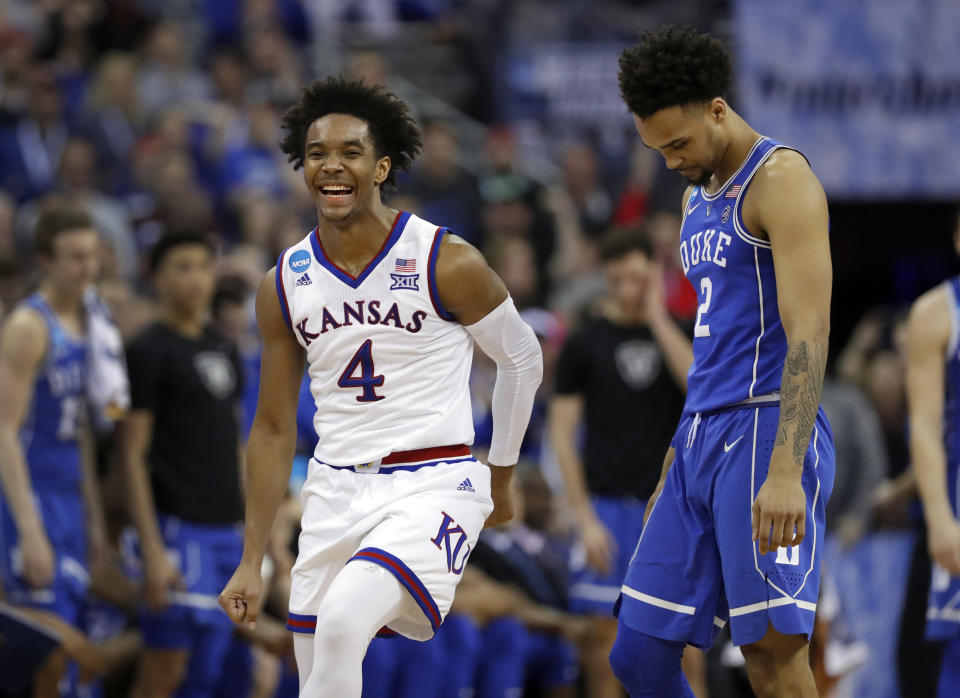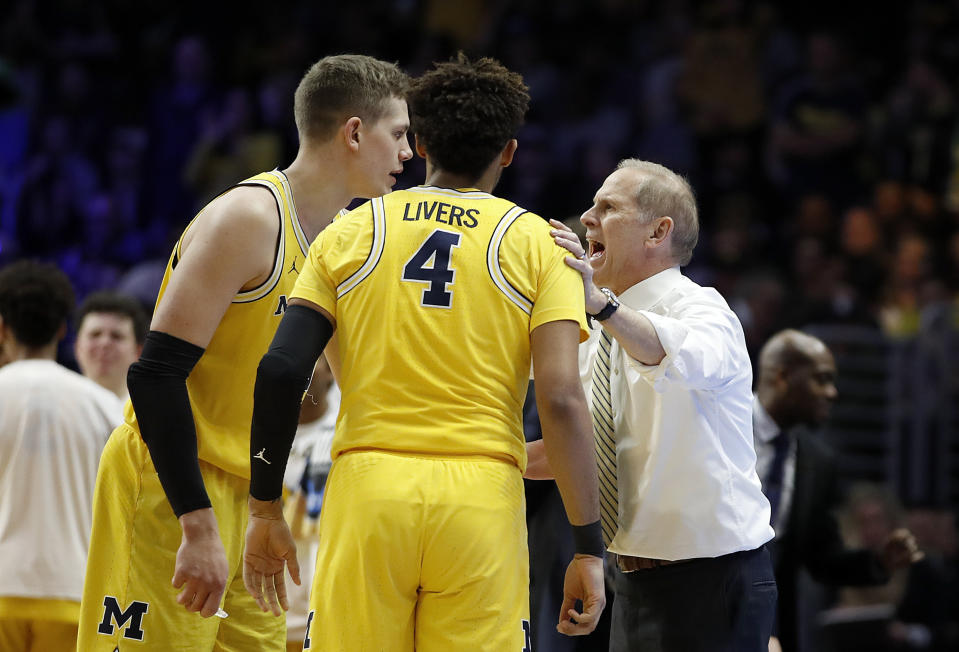Final Four: Breaking down the crucial matchups and what to watch
The 2018 Final Four features three marquee programs and one huge underdog: No. 11 seed Loyola Chicago vs. No. 3 seed Michigan and No. 1 seed Kansas vs. No. 1 seed Villanova. And we wouldn’t have it any other way. After examining the four most intriguing NBA prospects remaining, let’s dive into everything else you need to watch for on Saturday night, because like Sister Jean proclaimed so eloquently, “the Ramblers are coming to San Antonio.”

A defensive struggle?
Winning four games in the NCAA tournament is not a fluke, and anyone who says so either has never played basketball or never watched Loyola Chicago play. The Ramblers play for each other, and they do it on both ends of the floor. In fact, coach Porter Moser’s team ranks 19th nationally (ahead of Kansas) in adjusted defensive efficiency, 40 spots ahead of its offense, per Ken Pomeroy. One thing we know is that defense travels. Just look at Michigan. The Wolverines couldn’t hit a shot on opening weekend against Montana or Houston (13-of-46 from 3-point range), but because they are an elite defensive team — fourth in adjusted efficiency — they were able to overcome their frigid shooting. If both of these clubs play their best game, Michigan wins because it has a significant talent edge. But if Loyola finds a way to thwart 3-point attempts and eliminate kick out triples, the Ramblers’ defense — which held Kansas State to sub-35 percent shooting — will once again carry them.
Point guard nirvana
The best point guard matchup of the entire tournament is Kansas’ Devonte’ Graham vs. Villanova’s Jalen Brunson, both of whom earned consensus first-team All-America honors. Neither are especially big and neither are projected lottery picks, but that doesn’t take an ounce of shine off of this head-to-head matchup. Graham, a senior, is as tough as he is clutch and has been the impetus to the Jayhawks’ first Final Four in six years. When Bill Self needs a bucket, he usually turns to Graham, who usually makes a winning play — and not merely for himself either.
In the waning moments of Kansas’ Elite Eight win over Duke, the lightly recruited Graham — who originally committed to low-major Appalachian State — made a terrific play to locate Sviatoslav Mykhailiuk, who promptly took one dribble and buried a triple to send the game into overtime.
The beauty of Graham — who averages 17.2 points and 7.3 assists per game while connecting on 40.3 percent from three — is that he has a rare ability to attack the lane and create contact. “He was only shooting four free throws per game in non-league play,” a Big 12 head coach told Yahoo Sports. “Then his attempts jumped to eight. … I didn’t think he could be as good as [former Jayhawk and current Sacramento Kings point guard] Frank Mason. I think he’s better than Frank. The reason is he shoots it better.”

“In Graham, you have really one of the great leaders, not just players, in the country,” Duke coach Mike Krzyzewski said after his Blue Devils succumbed to KU. “Look, he’s one of the top five players in America, and it’s not just because he scores, but it’s how he leads. When he’s on the court, everybody is better. … That’s why they’re as good as they are.”
Brunson is a hyper-efficient coach on the floor with excellent shooting splits (53-41-81) who plays at his own pace like no other player in the country and doesn’t turn the ball over. If Graham tries to speed him up, Brunson — as he did against West Virginia’s Jevon Carter — will use that aggression against him. If Graham plays off, Brunson will simply take what Graham gives him and shoot from the perimeter. The junior connects on over 60 percent of his 2-point shots, which is a sensational clip for a guy who plays below the rim. Better yet, he ranks as Ken Pomeroy’s No. 2 player in the country.
Kansas’ 3-point shooting
All four of these teams can really shoot, but Kansas is the most reliant on long-range shooting, setting a school record this season with 41.1 percent (entering the Sweet 16) of its total field-goal attempts coming from 3-point range. The Jayhawks have three starters who make over 40 percent from deep, and two others who shoot over 35 percent. As a team, the Jayhawks make 40.3 percent of their threes. This gives coach Bill Self a tremendous advantage with his small-ball, four-guard lineup because of its versatility to shoot threes — both in the half-court and in transition.

Wait, what about the hottest team in America?
Michigan has rattled off 13 consecutive victories. In fact, the Wolverines haven’t lost in nearly two months. Perhaps the most impressive part is that this is not the Michigan team of 2012-13, when coach John Beilein had Trey Burke, the national player of the year, a lottery pick in Nic Stauskas, as well as first-rounders in Caris LeVert and Mitch McGary, and second-rounder Glenn Robinson III. This doesn’t discredit the talent of Moe Wagner, a gifted junior forward from Germany who can spread the floor and score inside, or the stellar play of Kentucky transfer Charles Matthews, one of the hottest players in the tournament. The 6-foot-6 junior wing is averaging 16.5 points in the Wolverines’ four wins.
Beilein is a fantastic coach who gets the most out of his players. Seven of his Wolverines have been drafted, yet none of them was a McDonald’s All American. With freshman point guard Xavier Simpson running the show and senior shooting guard Muhammad-Ali Abdur-Rahkman connecting on a career-best 38.8 percent of his threes, Michigan has its best chance at a second national championship — and it’s first in nearly three decades.
– – – – – – –
Follow Jordan Schultz on Twitter and Instagram @Schultz_Report
Jordan Schultz is an NFL, NBA and NCAAB insider/analyst for Yahoo Sports.
More from Yahoo Sports:
• How Shaq’s impatience led to a $70K Walmart trip
• Stanton makes 117 mph statement in Yankees debut
• Jackson’s curious decision sends message to NFL teams
• The Marlins waste no time in becoming MLB’s big joke

